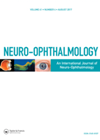
Journal Reviews
Narrative review of opsoclonus myoclonus ataxia syndrome following COVID-19
Opsoclonus myoclonus syndrome (OMS) / opsoclonus myoclonus ataxia syndrome (OMAS) is a rare central nervous system manifestation of COVID-19, but an increasing number of articles have reported patients in whom COVID-19 was complicated by OMS / OMAS. This narrative review...
Risk stratification to reduce intraoperative cataract surgical complications
The authors prospectively collected data on 1135 consecutive patients undergoing cataract surgery. They were risk stratified according to categories – A (no additional risk factors, 0 points), B (vitrectomy, corneal scarring, small pupil less than 3mm, shallow anterior chamber less...
Outcomes of cataract surgery in eyes with weak zonules
Pseudoexfoliation (PEX) and zonular weakness have long been known to increase the risk of complication of cataract surgery. This retrospective study looks at the results of phacoemulsion and intraocular implantation in 295 eyes with pseudoexfoliation and zonular weakness, with a...







